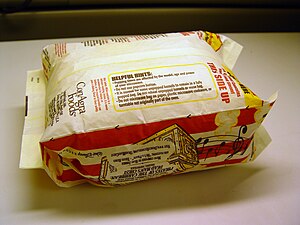Creating a good scatter on a group of fall turkeys can be
tough. The
birds often see or hear you coming before you can rush them. If you
do sneak close, charging in for a proper scatter challenges even the most spry
human legs and can be dangerous if you fall. And if the birds run off or fly
away in the same direction, you now have a bunch of paranoid turkeys to deal
with.
But there are other ways to hunt fall turkeys. These low-key but highly
effective tactics rely on woodsmanship and calling. Yes, you can call in a fall
turkey that hasn't been scattered. And if you don't get your bird today, it
still be around tomorrow.
Scouting is Key
Scout during summer and early fall so you'll know where turkeys will roost,
feed, dust, loaf, get Water and find grit. Walk woods and field edges looking
for all manner of !turkey sign--droppings, dusting areas, feathers from a
roost. Find a good vantage point and glass for birds on the move.
If you can't do any pre-season scouting, "power scout" when you
arrive at your hunting grounds. Talk to landowners, school bus drivers, mail
carriers, farmers and others who work the land and know it well, to learn when
and where turkeys have been spotted. This cuts valuable hours off your search
for birds.
HUNT THE ROOST-MORNING
If you know where turkeys like to roost or, better yet, if you actually saw
them fly up, sneak in close before first light the next morning. Set up just
like you would for a spring gobbler, only the intended target now will likely
be a hen or young jake.
Don't fiddle with putting out decoys; you'll run the risk of spooking birds.
Position yourself between the roost site and where the turkeys want to go for
their morning feed. Call with soft, sleepy-sounding
clucks and tree yelps. Once the birds start flying down, get aggressive with
bossy yelps, urgent kee-kees and pleading kee-kee runs. Fall birds make a
racket as they gather, primp, preen and confirm the day's pecking order, so
you'll need to work hard to grab their attention.
MORNING SETUPS
If your roost setup doesn't pan out, quietly head for a feeding area--the
corner of a harvested grain field (corn, soybeans and sorghum are prime), an
alfalfa field with its greenery and bugs or an abandoned meadow. Or set up
where you've seen turkeys traveling. Position yourself on a point of timber,
along a fenceline, or in a funnel between woods, fields or hills.
Put out a couple of decoys, or even a little flock of four or five. Gregarious
fall turkeys will check out any new comers to their territory, either to greet
them or pick a fight. Make soft purrs and clucks, like feeding birds would.
Belt out a few lonely yelps every once in a while to attract attention from any
birds that might be passing by your setup at a distance. Try throwing a few
kee-kees into the mix, too.
AFTERNOON SETUPS
Hunt in "hanging out" cover in the afternoon--mature timber where
birds are likely to loaf away the midday hours. Make setups for an hour or more
at strategic spots. Call with soft purrs and clucks. Sprinkle in a few yelps
and kee-kees occasionally.
If the weather is unseasonably warm, go to an area with spring seeps or other
dampness. Birds will come for water and greens. If the wind is howling, head
for calm areas in hollows and on the lee side of hills. If you found a dusting
area while scouting, set up there and wait for turkeys to come for their
afternoon bath.
Drift-&-Yelp
Fall's answer to spring's cutt-and-run, the drift-and-yelp is essentially a
still-hunt through good turkey grounds as you look for birds to set camp on. It is crucial to move slowly and quietly when setting up your spot, which is hard to do in a quiet woods setting. Stop
often, keeping your back against a tree for safety. Call with pleading lost
yelps and lonely kee-kees.
Sooner or later, a turkey will answer. Since you're already against a tree,
drop down and set up immediately. Forget about decoys--the real turkeys are
either close or on their way. Mimic what the bird says to you.
Hunt The Roost-Evening
Ease close to a known roost area a few hours before sunset. Set up quietly with
a couple of decoys and wait. Sit ahead of the expected roost trees by 50 to 75
yards, so you can shoot incoming turkeys where there's still good light.
Call softly, and use only a few contented purrs and clucks. In the quiet of
evening, these soft mumbles and whines say plenty.
Fake a Fight
Wild turkeys jostle and tussle for pecking order all year, but the skirmishing
increases in fall. Like schoolkids, turkeys love a good fight and will come
running to watch or join in on the action.
Set up where birds might be within earshot and go to town with loud, aggressive
fighting purrs and cackles from both a diaphragm and a slate or push-pin call
at once. You'll sound like two birds in an all-out turkey fight. Scuffle leaves
with your boots to add to the effect.
After a minute or so, put down the hand-operated call, pick up your shotgun and
get ready. Continue calling with your mouth for another minute before going
silent for a few more. Repeat the fight sequence every five minutes or so for
an hour.
Try a Flanking Maneuver
Take the hunt to the turkeys. Get to a strategic vantage point, spot some birds
and determine their travel route. Using terrain and vegetation as cover, sneak
ahead of the flock and set up. There's no time for decoys now.
Make some forlorn yelps and excited kee-kees, but mostly use purrs and clucks.
Wait at least an hour for pokey birds who may have veered off or found
something good to eat on the way.




















